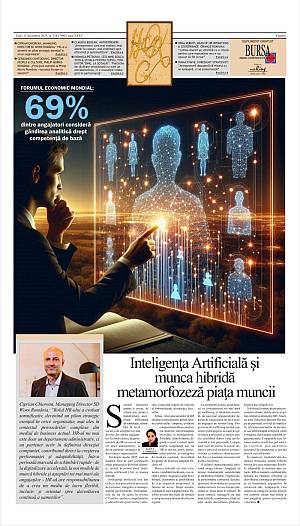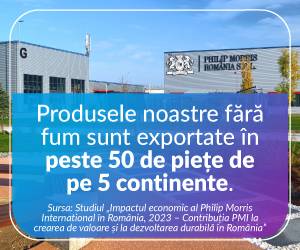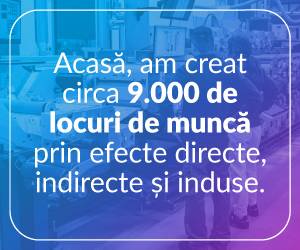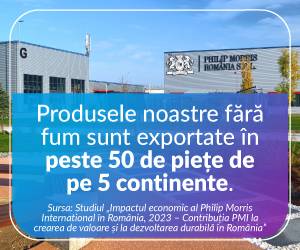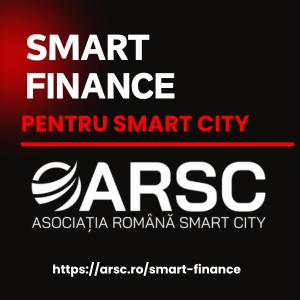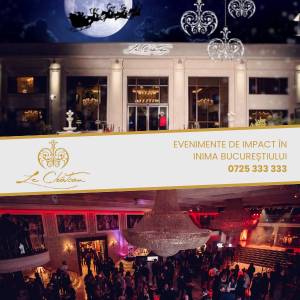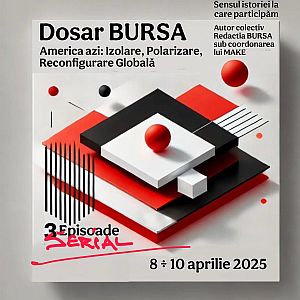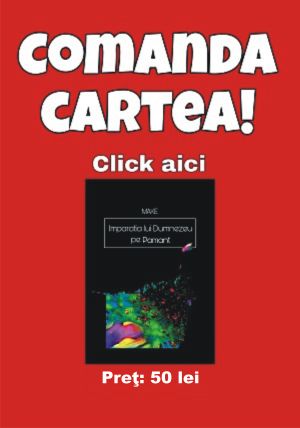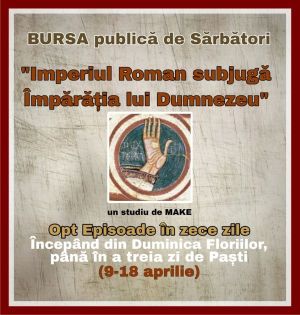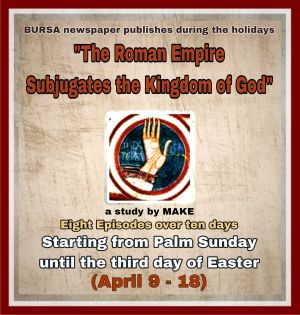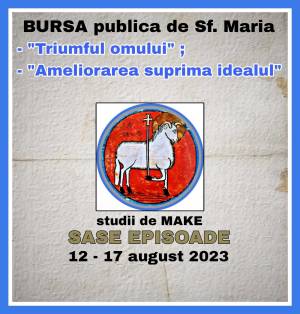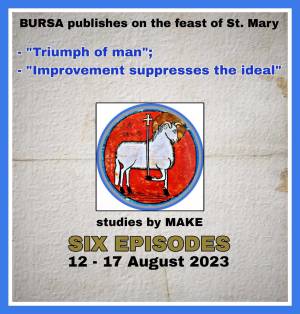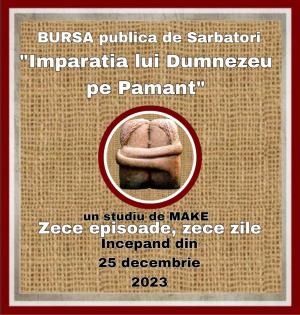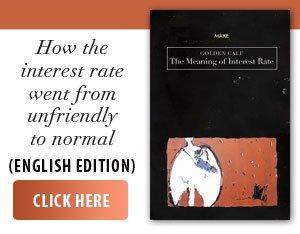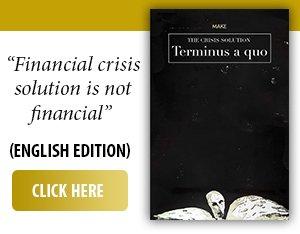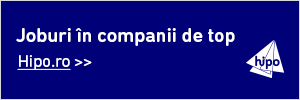
Radu Soviani: Mr. Farmache, now, more than 30 years since the start of the mass privatization program, I ask you what were the thoughts behind initiating this program and what were the most interesting elements in its evolution over the past 30 years?
Stere Farmache: I believe the thoughts were positive regarding mass privatization; it was a very extensive process. The knowledge, I dare say, of Romanians about privatization and mass privatization was insufficient, in my opinion. Very few people and very few officials knew exactly what would happen, how this project would unfold. That's why a firm was selected to create such a program, which later transformed into law. Expectations for this program were high; practically, through this program, the entire adult population of Romania was supposed to become, in one way or another, a shareholder and take a share of the social capital of state-owned companies. In 1989, all companies were state-owned. The main vector of this process was those certificates, financial instruments, to put it that way, those ownership certificates that were distributed to the adult population of Romania; there were around 18 million citizens who received these certificates. Already during the distribution of these certificates, the first nuances appeared, namely: people opted to place these certificates in companies not necessarily based on their performance but in companies where they probably worked, in companies for which they probably had a certain fondness. The older population, for example, had an inclination towards pharmaceutical companies because they were suppliers of medicines, while others preferred automobile companies, such as Dacia Piteşti, and so on. So, once received, these certificates were later introduced into the corporate circuit by converting them into shares in commercial companies. But before this process, the certificates remained with the citizens for a moment, a period of time. They were documents that gave citizens the right to exchange them for shares. How did it happen? This conversion of certificates did not happen uniformly. After they were distributed, they had a value of 25,000 lei, a package, let's say, a 5x5 certificate, worth 25,000 lei at that time. Later, a reevaluation of these certificates took place, and they reached a value of one million lei.
Radu Soviani: That was the time of the million and the coupon.
Stere Farmache: The million and the coupon, yes. Already, during this period, from the issuance of the certificates until they were valued at one million, these certificates had already become concentrated in various groups, hands, let's call them that, which evidently aimed at converting these certificates into shares in commercial companies. If I'm not mistaken, you could convert up to 10% of the social capital of a company. I don't think this happened punctually, but I know that at that time certain groups held them. I don't have exact data, but you know how it was, people talked. They had concentrated, and they were used in this privatization process, especially in the MEBO process when the management and employees of state-owned companies had the opportunity to buy shares, including converting these ownership certificates into shares. Of course, each citizen had a certificate, but to buy the entire capital of a company, you needed packages based on the size of the company. You needed significant packages of certificates. And then this gray, black market was born; there was always a debate about whether this market should be regulated or unregulated. It was somehow a legally uncovered area.
Radu Soviani: Wild?
Stere Farmache: We can say wild, the term might be too harsh, but it was a market. The law did not prohibit it, and these certificates circulated. You know, there was talk that a certificate was given for a bottle of "ţuică" (traditional Romanian spirit). It might be exaggerated, or maybe not, but things happened. In my opinion, what were the wrong steps: this privatization process was not supported by a minimal education process. People did not know exactly what to do with these certificates. Not only did they not know, it was their right, but some were given the idea that if they took such certificates and converted them into shares, and if the company went bankrupt, they would have to come up with money from home. So, the fear was even greater, and people preferred to get immediate liquidity, whether it was large, small, or miserable...
Radu Soviani: Miserable...
Stere Farmache: Miserable... And they got rid of them. Of course, during all this time, the entire country was covered by these intermediaries who collected these certificates through various other intermediaries and then sold them, of course, with a profit, sometimes a significant profit, to those who wanted to participate in the privatization process, MEBO, or even other processes. But there were very isolated cases - and privatization processes, let's say, transparent - where these certificates could be subscribed within public offerings and as part of a pilot program, let's say; they worked at that time. There was about a group of 100 commercial companies in the portfolio of the 5 SIFs, at that time they were Private Property Funds (FPP). These companies were in the portfolio of these funds, and they were put up for privatization for a maximum of 30% of the social capital, and privatization could be done by using these ownership certificates, which could be converted, of course, at the nominal value. At that time, the value had risen to one million lei, and thus, you became a shareholder. This was a somewhat transparent, public process, accessible to anyone. It was very isolated; one hundred companies out of 6,000 represent very little.
Radu Soviani: You mentioned the lack of financial education during privatization. I want to ask you if, looking back, you believe that someone capitalized on the lack of financial education to accumulate, not necessarily a large sum of money, but significant holdings in the economy.
Stere Farmache: I believe so, now, after 30 years. At that time, amidst the events, it was very difficult to detect. Personally, having education in the financial and capital market areas, I felt this advantage that some created based on the lack of financial education. I believe, I believed it then, and now I am absolutely convinced that adequate financial education, as it has been done in various programs every day on television, radio, and other mass media channels, to inform people about what to do with these certificates and, especially, to avoid selling them to intermediaries, would have been beneficial. At that time, no one was aware of the danger of this inadequate education; things went helter-skelter, so to speak, but it's possible that this lack of attention to education had an economic undertone, to allow some to collect these ownership certificates.
Radu Soviani: After 30 years, out of 18 million shareholders who participated in the mass privatization program, over 7 million have never shown interest in their shares, especially in financial investment companies, the so-called dormant investors. How was this possible, how is it possible, and who benefits from it?
Stere Farmache: This benefits, let's say, the shareholders of the SIFs, or the SIFs themselves, because there is a mass of shareholders, like residual shares.
Radu Soviani: About 10-15 each for every SIF.
Stere Farmache: Here, I remember that at the time when the SIFs were listed on the stock exchange and reached significant quotations, this residual package was worth 2 million, so 200 RON, as it were. So, each citizen who didn't place their coupon in a company benefited from this residual package, some residual shares in all five SIFs. At one point, the market value of this package, I made some calculations, was 200 lei (RON), approximately 40-50 euros. It was a significant amount then and maybe even now for some. These dormant shareholders, first of all, very few of them, very few, know that they have these shares. That they are owners. Very few of them had the opportunity to interact with the capital market, with the stock exchange; the stock exchange has not yet reached these social segments. And I believe that those who benefited from the inaction of these citizens were the SIFs because these actions obviously generated dividends, dividends that were lost, they expire in three years. So, if we take the moment of listing the SIFs in November 1999, it's been 20-something years, and some of them may have become interested. But I think their number was absolutely marginal and without any significance. The other dividends remained with the company, and the active shareholders of the SIFs benefited. This is a mass of shareholders for the market, a hanging mass in market operations. I wouldn't say it's a burden, but it's somehow a mass of shareholders for which a solution has not yet been found. At some point, I thought and proposed that these shareholders could somehow benefit from these residual shares. It's not a large value, but there are many; it could be a connection because all citizens deal with the tax authorities. All taxpayers, and when they went to pay their annual taxes - you've seen that some stand in line and pay - then, through a connection in the shareholder registry, they could find out: you have so many shares. That is, there was a moment when the shareholder, the citizen, became aware that they had some shares. And these shares could be intermediated by brokers. And in this way, almost obligatorily, citizens became aware that they were shareholders and could liquidate these shares through intermediaries at the market price.
Radu Soviani: Did you encounter opposition to this proposal?
Stere Farmache: Here, we must say, of course, the SIFs were not very active.
Radu Soviani: Why "of course"? So as not to be disturbed?
Stere Farmache: Because it is in the interest of a company's management to have a mass of shareholders who have no say.
Radu Soviani: Maybe in Romania, everywhere else is different.
Stere Farmache: In Romania, it never bothers them, and besides, the due dividends expire, and then the money goes into the company's treasury.
Radu Soviani: So, the management works against the shareholders, depriving them of dividends?
Stere Farmache: The management is attentive, but it is attentive to the important shareholders who have a vote. Who vote for them, it's like in politics. The subject has been discussed at the level of international financial organizations, various financial institutions have had various projects that have been discussed. So far, no solution has been found. In my opinion, the simplest mechanism was this: at the moment when the citizen paid their tax, they entered their personal identification number (CNP), and at that CNP, it appeared that they had seven shares. There could have been an authorized broker there, this is the market price, do you want to sell them? The person had the freedom, but at least they became aware of their shareholder rights. Things have remained at this stage, and the capital market or the Central Depository is dragging these shareholders, in large numbers but in terms of market value, I think it doesn't have a very significant impact.
Radu Soviani: I recently attended one of the general meetings of the SIFs (SIF1), and there were about 30% of the total represented shareholders. The remaining 70% seem indifferent... Are they dormant?
Stere Farmache: It doesn't necessarily mean that 70% constitute this group.
Radu Soviani: They weren't present at the AGM.
Stere Farmache: There are people who have bought shares in SIFs, not necessarily to influence the vote but for the performance they believe that particular SIF can generate. Probably, their voting power is low, so they prefer to stay home and not participate in the AGM. These are passive shareholders, among whom there might be this dormant group we talk about in the mass privatization process.
Radu Soviani: Over the past 23 years, we've done many shows together regarding the threshold for SIFs. 0.1 - 1 - 5%. Who benefited from the existence of that threshold for SIFs?
Stere Farmache: The threshold for SIFs, after so many years, has been discussed for a long time. The threshold for SIFs, you know, initially was set at 0.1%, which at that time "caught on," in the sense that, no, SIFs need to be institutions of the people. This is also the reason why, at some point, the Court of Accounts came to audit the SIFs since they were public institutions. They were actually private. So, it started from 0.1%, and it was challenging to combat this argument at that time because the concepts of the capital market and free-market economy were quasi-unknown. Although many people advocated for the free market and the capital market, very few actually acted on it. Therefore, this 0.1% threshold stuck, and of course, it was a political decision because SIFs were established by law. So, we stayed with this threshold for a long time. Subsequently, this threshold gradually increased, and now, one of the reasons why the management of SIFs over time wanted to maintain this threshold was to ensure the comfort that they would continue in management without being disturbed.
Radu Soviani: Is it a sort of fortress? So that they won't be replaced?
Stere Farmache: Well, yes, because no one owns more than 0.1%. It's very difficult to replace them, only through a concerted action, and it was very difficult at that time. So, this was one of the reasons, and it worked. Later on, the market exerted constant pressure to increase this threshold, but it's never good in the market to choose extremes-either a very low threshold or abandonment for certain public institutions because, at some point, investment funds can engage in cross-holding and have cross-ownership.
Radu Soviani: Which they did.
Stere Farmache: It needs to be looked at very carefully to ensure transparency and a decision-making process of the management not influenced by these cross-ownership holdings.
Radu Soviani: Within the confines of these thresholds, until their abolition, we've reached a situation where we are now - SIF1 owns SIF4, Muntenia Invest, and SIF4 owns SIF5. That is, one SIF controls two other SIFs. How do you see this, the fact that one SIF has come to control two other SIFs, compared to the initial expectations and the development of the capital market?
Stere Farmache: Personally, some 20-something years ago, I learned that cross-holdings for investment funds-these cross-ownership structures-are operations that need to be limited. That's what I learned when we talk about investment funds. I believe that in this situation, the activity of SIFs needs to be very well regulated. There's always been a dispute between having barriers and not having barriers in the capital market, but I think what is crucial for shareholders is to know who the beneficiaries or holders are, those who have the controlling position in a company. I believe that is the most important thing. Shareholders in an investment fund need to know, at the time of their investment, who holds the controlling position and who, in fact, having the controlling position, makes decisions in that company. That, to me, seems essential. Based on that, everyone chooses whether to invest or divest.
Radu Soviani: The press writes, and has written a lot, about the fact that SIF1, through some funds, borrows money from the shareholders of those funds to invest, paying a commission between 2 and 12 percent, and those investment funds vote for perpetual leadership, again returning to the idea of fortresses in SIFs. How do you see this situation, using the money of the shareholders?
Stere Farmache: I'm not familiar with the exact case you describe, but I repeat, all these processes, decisions, including loans, must be made public, and the authority, there, if it detects an operation that is non-transparent or violates the rights of minority shareholders, must take action.
Radu Soviani: 30 years ago, the SIFs held 30% of the economy. Now they own almost nothing, without meaning that they are not valuable, but in relation to the percentage of 30% of the economy. Should the evolution have gone this way or in the opposite direction?
Stere Farmache: This should be a start. That is, the beginning was not bad. Conceptually, it was a positive idea. Yes, we need to privatize, yes, 30% must go to private funds - these FPPs (Private Pension Funds), the idea was not wrong. In the meantime, things, once these SIFs entered the market, of course, in the market, shares change every day, every hour, and then there is a concentration of shares. So, the idea of maintaining this portfolio they initially had, in the capital market, things move, you can't keep the same status. At present, they have become 100% private financial investment companies. With that component of dormant investors who have no influence in the decision-making process. But at present, that's what they are. I would say they have deviated a lot from what they wanted to be at that time. Now they are 100% private institutions, but private institutions that must adhere to certain transparency rules and a certain conduct in trading shares.
Radu Soviani: Regarding the evolution, the million and the coupon, I even did an interview at the Central Depository with an investor who, after 20-something years, sold his shares, I think he received 2000 lei for them, if we update with the inflation rate of the last 20 years. 100 lei now means 86 new lei, meaning a loss. In nominal terms, they are 2000 lei, but with inflation over these 20 years, the evolution is negative. How do you see this evolution? It's about a shareholder who had the entire coupon at an SIF.
Stere Farmache: Yes, they have been diluted a lot, and this is the major drawback because it was one thing if these shareholders could sell their shares at that time when the value of the shares meant something. However, in the meantime, inflation has eroded a lot, and the depreciation of the leu against foreign currency has greatly diminished the value, and at present, the value no longer represents what it was 30 years ago.
Radu Soviani: It was foreseeable from the initial situation with 18 million shareholders and a 0.1% ownership threshold that the SIFs would end up in the hands of a few.
Stere Farmache: To be honest, I believe that if someone had told the authorities at that time that this would happen, they would have had significant reservations. Because initially, the distribution to citizens was intended to be a continuous benefit for citizens. But that's how things work. In a market economy, in a capital market, things move. Today we have a shareholder structure; in a year or two, things evolve. But I think such a perspective would have scared them at that time.
Radu Soviani: There are also opinions that say that such a perspective could have been anticipated and that this was the goal. How do you respond to those opinions?
Stere Farmache: I think this opinion is also valid. It is valid, yes. In any case, a clear mind or at least people in the financial sector knew and know that once a company enters the market, the shareholding structure changes, and, of course, there is a process of concentration of shares. That is, a company cannot perpetually remain with a degree of share dissemination among 18 million shareholders; instead, a concentration process occurs where certain investors aim to obtain a controlling position in the company.
Radu Soviani: Which is okay as long as they do it legally.
Stere Farmache: Yes, as long as it is legal. That's how things have worked in all publicly listed companies; there has been a concentration process, unlike a mature market where there is concentration but I remember that the Ford family, in the Ford company listed on the stock exchange, held control with only 10%, the rest was public. But it's a much more mature market, and there investors invested in the Ford brand and what the Ford family did for that company. Here, control is manifested with higher percentages and stronger positions in society.
Radu Soviani: I would like to ask you how you see the functioning of the capital market supervision in this period, from the beginning of mass privatization until now, and how did episodes like FNI, FNA, Banca Populară Română, Banca Albina, Bankcoop, Bancorex-BCR influence the idea of investment in the capital market?
Stere Farmache: Unfortunately, unlike the banking market, but we cannot say that the banking market was spared from events because there we had resounding bankruptcies as well, but unlike the banking market, which eventually became a financial institution of reference in Romania, the capital market was shaken by many crises from the very beginning. CNVM was barely established, and we had the SAFI crisis. So, the supervisor started with a crisis in the mutual fund market. After SAFI, there was FNI, another earthquake with considerable amplitude. After that, other events on the capital market. The supervisor, in turn, underwent certain changes; it transformed from CNVM into ASF because that was the European trend, although not all European countries adopted this model.
Radu Soviani: I ask you this because I was watching a show we did together in the 2000s, and we were discussing a situation at SIF5 where there was a general meeting of shareholders, the threshold was 0.1%, but the management of the SIF was sending shareholders a kind of proxies by mail, and if they didn't express their point of view, the management could vote on behalf of those who hadn't voted. How do you see this situation now, considering the evolution?
Stere Farmache: I think there has been progress compared to that year. I remember exactly how the vote was obtained, that remaining silent meant someone was voting for you. I don't think such things happen anymore in the Romanian capital market; things have evolved, general meetings have much clearer, very precise rules, including proxies, including the access of foreign investors, how they vote in the capital market. I don't think such things happen anymore; regulations have evolved a lot. I would say the market is well-regulated, sometimes over-regulated, but that's not everything. Regulations must also be respected by participants, and then the role of the supervisor is essential.
Looking back, my opinion regarding this mass privatization process is as follows: I think there was a lack of experience in approaching these projects, but at some point, there was, underneath it all, an interest. Not everyone lacked experience; some knew how certain things would evolve. And I think there was a combination of both factors: a lack of experience and, to some extent, some interests that some wanted to materialize in the market. After that, I believe at that time, too much attention or weight was given to what the strategic investor meant. It was very difficult in that period to convince someone that privatization through transparent mechanisms on the capital market could be more beneficial, more beneficial than choosing a strategic investor, but it was very difficult. I remember that at some point, there was talk about OLTCHIM, listed, a lot of interest, there were very good prices, and then the company would have benefited if the state had sold through the market, where certainly local investors would have come, but also international ones, it would have reached a successful privatization process for OLTCHIM. At that time, the reaction of the State Ownership Fund (FPS) was: we are looking for strategic investors. And they kept looking until... I remember being at the Senate in those days, at the Budget and Finance Committee, and I said: look, what prices, it's a company that is attractive to investors, institutional investors come, and even if it is sold on the stock exchange, that doesn't mean you exclude an institutional investor, you can combine the two interests, that is, part, 30%, through the stock exchange, institutional investors, and the state could also hold. It could have been a shareholding structure that would ultimately benefit shareholders, strategic investors, and the state. Even in a minority position, the state could have benefited from the know-how that the strategic investor brought, the positive pressure induced by institutional investors on the stock exchange. There were even international funds interested, and then, under the impetus of these positive forces, the management could have performed, and maybe today we would have had a much better society than we did then, and of course, we would not have gone through the periods we all know.
Radu Soviani: In all these years, practically, you are synonymous with the image of the CEO of the Bucharest Stock Exchange. Over the years, who exerted the most pressure on you?
Stere Farmache: I must say with pride, although in the exchange's board, there were people, intermediaries belonging to banks, retail investors, I enjoyed their respect, and no one ever asked me to do something, especially to disclose confidential information. You know there were special transactions on the stock exchange, deals, and of course, all intermediaries wanted to know about them, but no one ever dared, and I say it very openly and sincerely - no one ever asked me. On the other hand, the brokers' interests, legitimate ones, represented financial institutions - banks, funds, independent investors, and they wanted certain stock exchange decisions to support these segments. But we always had balanced solutions.
Radu Soviani: Do you think the situation is still pressure-free now? That's why I ask: we have SIF1 controlling SIF4, SIF5. It controls BVB, a listed company, and BVB holds the Central Depository, which keeps 7 million dormant shareholders, in the sense that we don't see efforts. Is this situation okay?
Stere Farmache: I don't know the current balance of power, but as long as I was there, I didn't experience such pressure for someone to control something, and I say this without any reservation. Currently, of course, power dynamics may change, but if there is a control structure, it should be avoided.
Radu Soviani: Thank you!






















